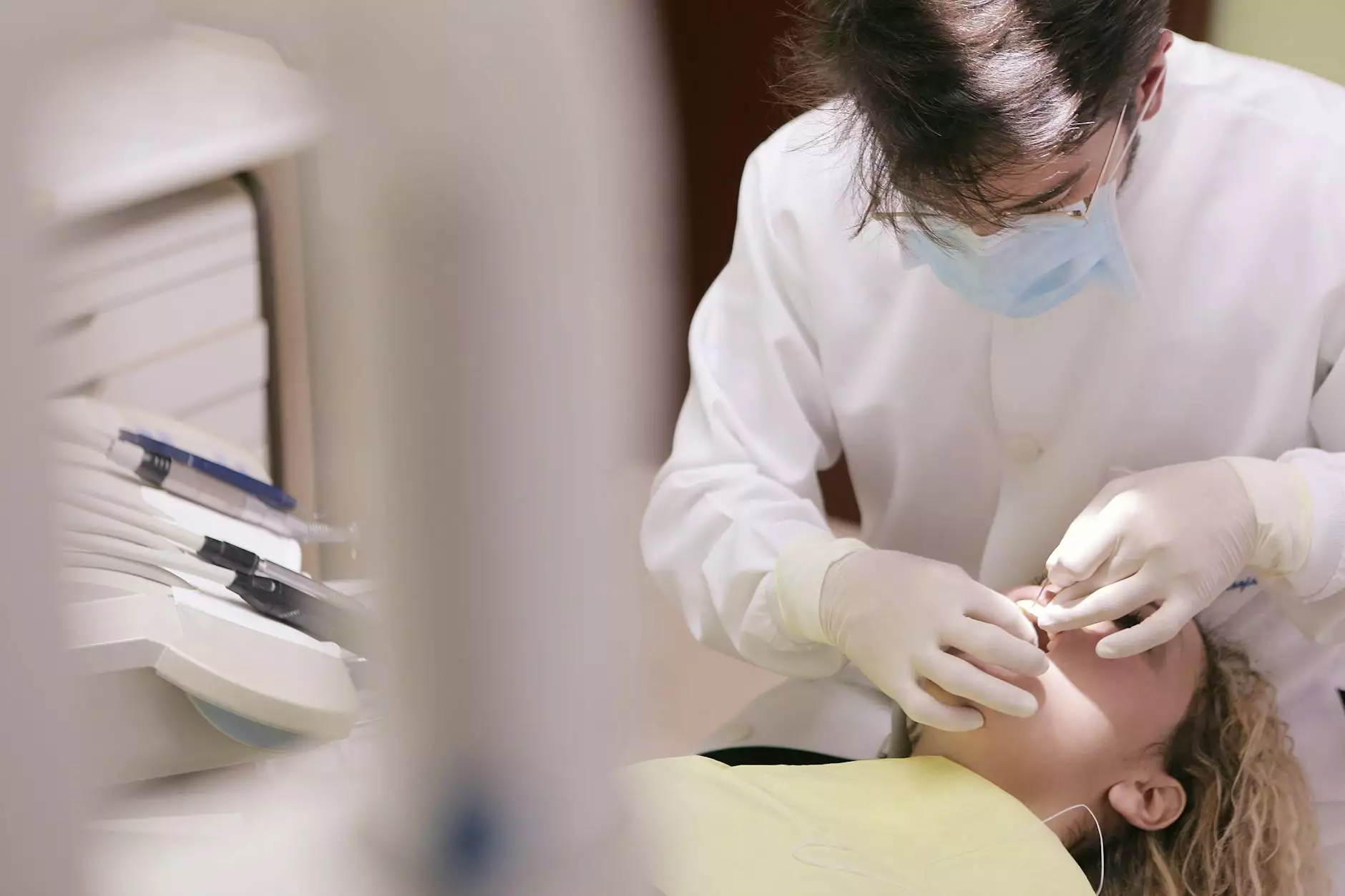The Ultimate Guide to Understanding the Western Blot Mechanism for Protein Detection and Analysis
Introduction to Protein Detection Techniques
In the realm of modern biological research, the accurate detection and quantification of proteins are foundational to understanding cellular processes, disease mechanisms, and therapeutic targets. Among the array of protein analysis techniques, the western blot mechanism stands as a gold standard for its specificity, reliability, and versatility. This comprehensive guide explores the scientific intricacies, procedural components, and cutting-edge innovations associated with the western blot mechanism, empowering researchers and laboratories to optimize their experimental outcomes.
Understanding the Science Behind the Western Blot Mechanism
Historical Context and Development
Developed in the late 20th century, the western blot technique revolutionized protein analysis. It originated as an extension of earlier methods such as the Southern blot (for DNA) and Northern blot (for RNA). The western blot mechanism combines gel electrophoresis, membrane transfer, and antibody-based detection to identify specific proteins within complex mixtures, offering unparalleled specificity and sensitivity.
Fundamental Principles
- Gel Electrophoresis: Proteins are separated based on their size using SDS-PAGE, which denatures proteins and imparts a uniform negative charge.
- Transfer to Membrane: Separated proteins are transferred to a durable membrane, typically made of nitrocellulose or PVDF, preserving their relative positions.
- Immunodetection: The membrane is probed with specific primary antibodies, which bind to the target protein. Secondary antibodies conjugated with detection enzymes or fluorophores enable visualization.
This sequence allows precise detection of proteins, supporting qualitative and quantitative analyses essential for research and clinical diagnostics.
Detailed Walkthrough of the Western Blot Mechanism
Step 1: Sample Preparation
Optimal sample preparation is crucial. Proteins are extracted using lysis buffers containing detergents, salts, and protease inhibitors to ensure integrity. Proper quantification with tools like BCA assays guarantees consistent loading, which is vital for accurate interpretation.
Step 2: Gel Electrophoresis and Protein Separation
Samples are mixed with SDS sample buffer and heated to denature proteins. The mixture is loaded onto an SDS-PAGE gel, where an electric current causes proteins to migrate through the gel matrix. Smaller proteins migrate faster, resulting in size-based separation.
Step 3: Transfer to Membrane
The resolved proteins are transferred onto a membrane via electroblotting, maintaining the spatial arrangement. This transfer step is pivotal for subsequent antibody binding and detection.
Step 4: Blocking Non-specific Sites
The membrane is incubated with blocking agents—such as bovine serum albumin or non-fat dry milk—to prevent non-specific antibody interactions, thereby increasing signal specificity and reducing background noise.
Step 5: Antibody Incubation
The primary antibody is applied, binding specifically to the target protein. After washing away unbound antibodies, a secondary antibody conjugated with a detection enzyme (like horseradish peroxidase) or fluorophore is added to amplify the signal.
Step 6: Signal Detection and Analysis
The detection system—chemiluminescent or fluorescence-based—reveals the presence of the target protein. Digital imaging systems capture the signals, and analysis software quantifies band intensity, correlating to protein abundance.
Key Components of a Successful Western Blot Mechanism
Critical Reagents and Equipment
- Polyacrylamide Gels: Precise pore size for effective separation of differing protein sizes.
- Membranes: Nitrocellulose or PVDF for protein immobilization.
- Primary and Secondary Antibodies: Specificity and affinity are essential for clear results.
- Detection Systems: Chemiluminescence, fluorescence, and digital imaging platforms.
- Electrophoresis and Transfer Equipment: Power supplies, gel tanks, and transfer blotters ensure efficient processing.
Optimization Tips for Enhanced Results
- Sample Quality: Use fresh samples and include protease inhibitors.
- Antibody Selection: Use validated, high-affinity antibodies specific to the target.
- Blocking Conditions: Optimize blocking agents and duration to minimize background noise.
- Wash Stringency: Multiple washes with appropriate buffers improve specificity.
- Quantitative Analysis: Use housekeeping proteins as loading controls for normalization.
The Application of Western Blot Mechanism in Scientific Research
Biomedical and Clinical Diagnostics
Western blotting is instrumental in diagnosing diseases by detecting pathogen proteins or disease-specific biomarkers. It confirms protein expression levels, post-translational modifications, and protein-protein interactions, vital in translational medicine.
Research and Development
Whether studying signal transduction pathways, protein expression dynamics, or antibody validation, the western blot mechanism provides researchers with critical data points to drive innovation in therapeutics, vaccine development, and molecular biology.
Quality Control in Biotechnology
Manufacturing biologics and ensuring batch consistency often employ western blot assays for verifying protein contents, integrity, and modifications, maintaining high standards within the industry.
Advances and Innovations in Western Blot Mechanism
Automation and High-Throughput Platforms
Modern laboratories leverage automated systems to increase throughput, reproducibility, and data consistency. Robotic liquid handlers and digital imaging platforms streamline workflows, reducing human error.
Enhanced Detection Technologies
Enhanced chemiluminescent substrates and multiplex fluorescent detection allow simultaneous probing for multiple proteins, saving time and resources while increasing data richness.
Integration with Other Analytical Techniques
Combining western blotting with mass spectrometry, for example, enables detailed proteomic analysis and precise post-translational modification detection, expanding the capabilities of traditional western blotting.
Choosing the Right Partner for Western Blot Reagents and Services
Leading biotech companies like precisionbiosystems.com provide comprehensive solutions, including high-quality antibodies, optimized reagents, and custom services tailored for the western blot mechanism. With expert technical support and innovative products, laboratories can achieve superior results efficiently.
Why Partner with Experts?
- Product Quality: Guaranteed consistency and specificity to ensure reliable data.
- Technical Support: Access to expert guidance for protocol optimization.
- Customization: Custom antibody development and assay design tailored to specific research needs.
- Cost-efficiency: Competitive pricing without compromising quality.
Conclusion: Embracing the Power of the Western Blot Mechanism
The western blot mechanism remains an indispensable tool in the arsenal of molecular biologists and biomedical researchers. Its ability to provide precise, reliable, and detailed information about protein expression and modifications fuels scientific discovery and clinical advancements. By understanding its scientific principles, mastering its procedural nuances, and leveraging innovative technologies, researchers can unlock new insights into cellular function and disease pathology.
For laboratories seeking top-tier reagents and expert support, partnering with trusted providers like precisionbiosystems.com ensures access to advanced solutions that elevate their research excellence.
Embrace the evolving landscape of protein analysis, and harness the full potential of the western blot mechanism to push the boundaries of scientific knowledge and medical progress.
© 2024 Precision BioSystems. All rights reserved.



